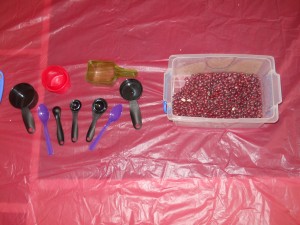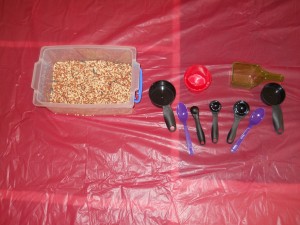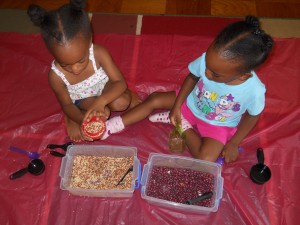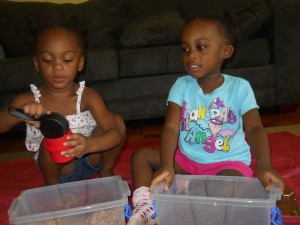One day while watching “A Place of Our Own” on PBS I learned how to make a sensory box. This is my girls’ new favorite activity. We also use it to teach them about their five senses in action.
Materials we used
- Plastic table cloth
- Box/large container or bowl (the larger the better because it will help minimize the mess you child may eventually make.
- Dry beans or rice, bird seeds, cocoa mulch, dried pasta etc… (don’t mix materials).
- Scoops – spoons, laddles, measuring containers, or liquid laundry detergent tops.
The benefits of a sensory box
- Teaches a child about their five senses: hearing, seeing, touching, smelling, and tasting (only in some cases).
- Helps a child relax and take in the moment. The box contains everything they need to explore and the child enjoys the independent control.
- Can help a child learn different materials, as well as helping to develop their coordination.
- You can also use the box to aid you in teaching math as something tangible, such as counting the amount of scoops it takes to fill a container.
- This activity also helps your child cultivate patience.
Things to be aware of
If now watched closely, this activity can get really messy even if you have a cloth or plastic mat on the floor. I recommend using larger materials. We used dry beans and bird seeds. Next time I make the box if we are doing this activity indoors, I will not use the bird seeds; instead I will try cocoa mulch. Sand and bird seeds are very fine and small and get all over the place so if you like for your child to explore using these materials I recommend going outside.
Book that helps to reinforce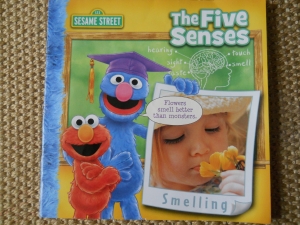
Sesame Street has a wonderful Senses book called “The Five Sense,” that has pictures of children just like them that help explain what the senses are, how they look, and how to identify them. While your kids are enjoying their sensory boxes, join them and using the same materials that are in their boxes explain the senses and ask questions.
Here are some of the questions I asked:
- Which material is the largest? Smallest?
- How do the materials smell? Do they smell the same?
- How do they feel in your hands? Hard, soft, rough, or smooth?
- When you are scooping your materials are they silent or noisy?
- If you have materials that are OK to taste ask, do the materials taste the same or different?

